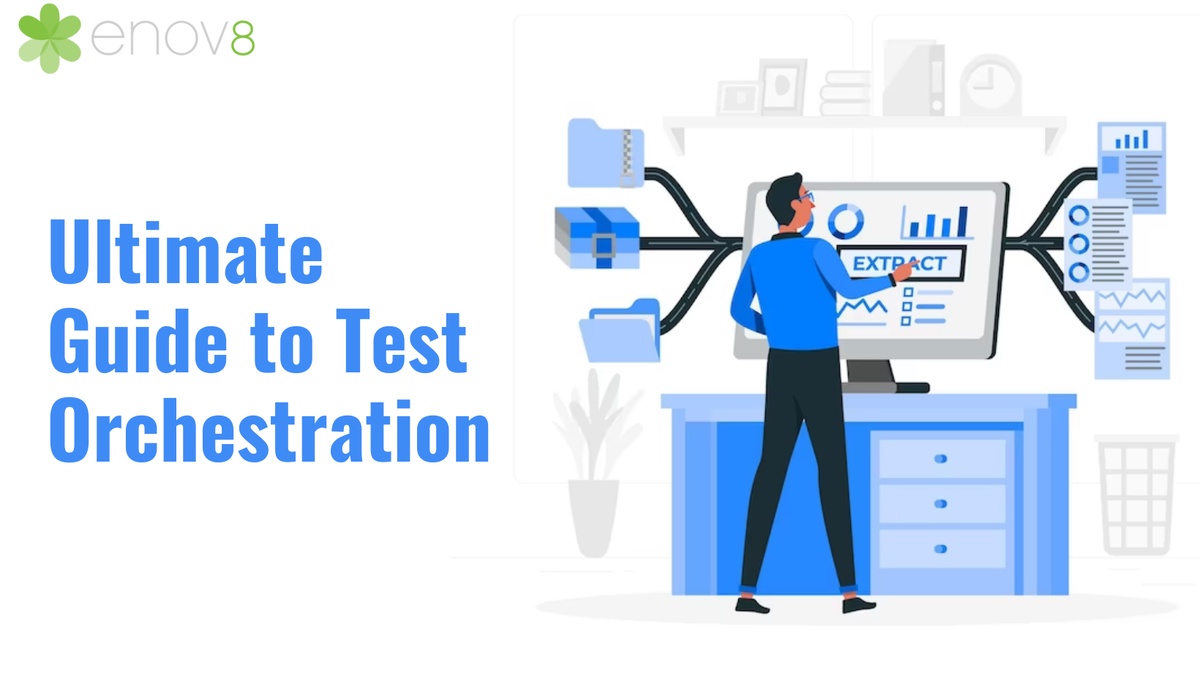Regarding agile software development methodology, the velocity of testing is vital to delivering high-quality software within the stipulated time and budget.
As a result, there is a need to look for DevOps services and solutions that can automate the testing process via test orchestration.
Many software development teams think that test automation is a discreet step in the software delivery lifecycle rather than a designed sequence of steps.
Software needs to pass through multiple aspects of testing, including unit, integration, functional, smoke, and performance testing. An organisation must automate each step to achieve specific software behaviour and reduce the time to test.
However, you can't achieve the desired quality and cost reduction by simply automating the tests. It's when test orchestration comes into play. This article will guide you on everything about test orchestration.
What is Test Orchestration?
Test orchestration is about setting up a well-defined sequence of all automated software testing activities.
For example, at the end of the software development cycle, when software is ready for release, the development team performs several activities before the software is made available for end users.
Each test activity might be individually automated but requires manual intervention to trigger them at the right time via the correct input data. Test orchestration can tie each automated test activity into a single synchronous process.
What are the Benefits of Test Orchestration?
For a robust test environment, it's a must for software development teams to deploy test orchestration. Now that testing is one of the main bottlenecks to fast and continuous software delivery, orchestrating the tests can help delivery teams experience various benefits:
Fail early, fix easily
When any test case fails early in the software delivery cycle, test orchestration makes it much easier to address the issues while minimising the complexity.
Better automation coverage
Automation coverage improves for the application when test orchestration is deployed for sequencing test automation activities. Moreover, when a company automates more test cases, it becomes easier to reduce the cost and time of software delivery with test orchestration.
Faster software builds
By automating several tests, enterprises can easily and quickly contrast the test pipelines and prepare software builds.
Increased productivity
You can test all aspects of software across multiple concerns by automating tests and creating orchestration pipelines. It directly improves the application delivery team's overall productivity.
Reduce the risk of failure
Delivery teams can create test orchestration pipelines according to software risk assessment. In addition, you can build focused pipelines to address the risks and concerns related to application performance, availability, scalability, robustness, and security.
Smaller feedback loop
Test orchestration provides greater visibility into each testing phase and provides faster feedback loops and test data, enabling organisations to meet all data compliance requirements.
When you orchestrate a particular concern, like security, only the information and application security experts will be required to set it up and verify its results.
What Should be the Plan for Test Orchestration?
Since test orchestration is fundamental to an automation testing framework, it must be implemented with proper planning for high-quality software release. An effective plan for test orchestration should include the following:
Establish a measurable purpose for test orchestration pipelines
It's recommended to define each test orchestration pipeline to trigger every application release and perform the performance testing under different degrees of load.
The expected outcomes comprise performance metrics and software configuration recommendations for higher throughputs.
Defining a measurable purpose for each test orchestration pipeline can help identify the level of test automation planned and achieved in a specific direction.
Identify the tools
Choosing the right tools can influence the correctness of the test outcome without any manual intervention.
Always remember that tools used for generating and loading data for performance tests will differ from tools used to create data to run the functional tests.
You must create scripts and add them to the pipeline when not using the tools that act according to the requirements of the test orchestration pipeline.
Identify the data and logs that are to be monitored
The system's intelligence is necessary for a successful release cycle, and orchestrating the pipeline can help deliver its best value when all the required outputs are captured and analysed.
Automate more tests
It will help if you start automating the simplest test cases first. For any UI or API use case, you can use low-code test automation tools that can help eliminate the complexities of manual testing and allow quick and efficient testing.
Concluding Words
Many enterprises usually end up with more than necessary test cases, with lots of overlap. It happens because their tests are not modelled according to their business needs but some generic vanity metrics.
By orchestrating tests, companies can gain complete visibility into the continuous testing cycle, minimise redundancy in the testing cycle, and build test cases according to their business needs.
Furthermore, businesses can deploy necessary DevOps services and solutions to automate and orchestrate software testing activities seamlessly.


No comments yet